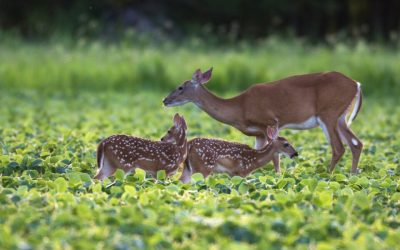Many of us know how attractive the American Persimmon can be to wildlife, especially whitetail deer. But how many of us have spent numerous hours in the field scouting for these fruit-bearing trees only to find a large persimmon tree with no fruit on it at all?
Understanding Persimmon Production
What many people are unaware of is that the American Persimmon tree can be either a male or a female; females produce fruit, and males produce pollen. Determining a persimmon tree’s sex until it actually begins flowering and producing is impossible. So it’s important to do some scouting during the right time of year to figure out which trees are male and which are female.
When To Scout For Persimmons
Late summer/early fall is a great time to let persimmons tell you whether they’re male or female. Pre-season scouting will allow you to flag the fruit-bearing persimmons so you can come back to the “flagged” trees during hunting season. You can also look for calyxes on the ground. The calyx is the woody portion that’s attached to the mature fruits.
Encourage Fruit Production
GameKeepers can also increase wildlife utilization by returning to the “flagged” trees during the spring for removal of competing vegetation and fertilization. Vegetation removal can be as simple as using a backpack sprayer to control unwanted vegetation. Once you’ve removed the vegetation, fertilizing the tree is another great way to help persimmons increase fruit production in the future.
Native Nurseries has a selection of rapid mast fruit trees that are outstanding sources of vitamins and minerals for wildlife. In addition, they are exceptionally attractive, maintenance free, and can be a great spot to hang a trail camera.
Various mast producing trees such as oaks and fruit trees are a great way to provide additional food to the wildlife on your property in key areas. Keep these tips in mind to ensure success.
For more GameKeeper tips on trees check out “4 Tips When Planting Trees For Wildlife”.







0 Comments